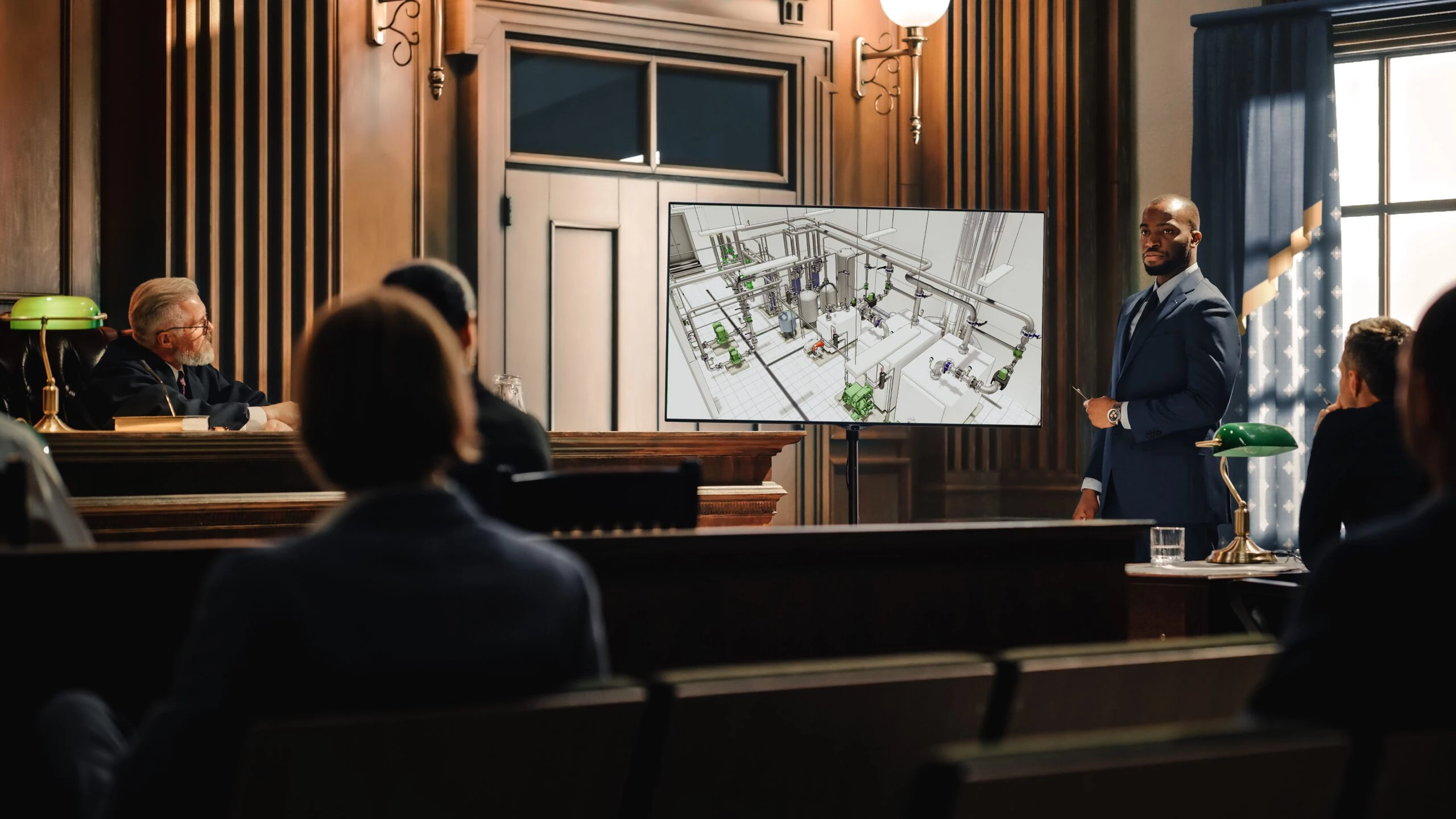At IMS, we’ve had decades to work with trial graphics and technology. But ours is an assisting role; we experience the world of trial graphics from one side—the consultant’s. As such, we wanted to learn more about how lawyers themselves plan for and use demonstratives.
So, we reached out to Kurt Niederluecke, attorney at Fredrikson & Byron, P.A. and former chair of their Intellectual Property Litigation Group. Kurt was kind enough to share with us his own experiences with trial graphics. He discussed the realities of using visuals in modern trials and how litigators handle clients’ needs in today’s world. Using his insightful feedback, we put together the following pointers:
1) Trial Graphics Are Best Developed Early—But That Can Be a Luxury
Q: How close to trial do you like to start developing trial graphics?
A: It sometimes happens a week before or during. But to be perfectly prepared, we look to do them as far in advance as a couple months before. Not that it always happens. We’re often simply not prepared enough in the case to have that luxury.
Kurt was clear that the nature of an attorney’s job often leaves little time to consider graphics. In the shifting, mile-a-minute trial world, fitting graphics in can be a luxury.
However, it’s also true that the best graphics are started as early as eight or more weeks in advance. Indeed, there are numerous benefits, both direct and auxiliary, to addressing your trial graphics needs early—especially now that “everything’s gone electronic.” Strong visuals are a must with modern juries.
In other words, reality is reality: Often there’s simply no time. But with high-risk, complex cases in particular, it’s important to consider the power of starting your graphic concepts early on. They tend to help focus your case and can often save you time in the end.
2) Great Graphics Can Set You Apart from Plaintiffs
Q: Ever run into cases where opposing counsel has nothing? Only old-school tech or graphics?
A: I have. I’ve always found that what we use in our trials is at least as good as what we see elsewhere. I’m usually not blown away by opposing counsel. In a typical-size case, we don’t really see the other side using tremendous graphics.
In Kurt’s experience, many attorneys still tend to lag behind in their visuals. This presents a great opportunity for those looking to gain a leg up on the opposition. Remember, while high-quality graphics used to strike many jurors as ostentatious, today’s jurors expect them. So, if your opponent hasn’t caught up with the changing times, it’s all the better for your case.
Of course, that’s not guaranteed. Sometimes opposing counsel can go in the other direction, surprising you with some truly formidable graphics. As Kurt added, “Occasionally, in things like Markman hearings, you’ll see some serious money put in by opposing counsel—some pretty cool presentations.” In such situations, not having your own high-quality graphics can put you at a disadvantage when trying to persuade judges or juries.
3) A Dependable Trial Graphics Technician Is Invaluable
Q: Do you normally have somebody in court to run the technology piece?
A: Yes, always. It gives you integration with your graphics side—they’re responsible for coordinating everything. It can make or break the case. In today’s world, having to present so many graphics to juries, if that doesn’t go smoothly (if things aren’t working right, if you’re sitting around bumbling) I think the jury can lose confidence. Graphics coming up smoothly, keeping your flow and timing, it’s really important.
Kurt said it best here. Bringing in an expert to handle the technical side of the presentation allows you to focus solely on making your best case. A great technician maintains your timing, acts as a safeguard against technical problems, and can adapt to new or unforeseen circumstances without missing a beat. A break in that flow can damage your impact with jurors.
4) These Days, Detailed and Accurate Budgets Are Paramount for Clients
Of course, trial graphics and technology also come with practical considerations. As Kurt was quick to note, “Obviously cost comes into play: for the client, how it affects my budget.”
Q: Are your clients looking for an all-in number?
A: Most [clients] nowadays are looking for budgets they can count on, take to heart. They look to those budgets, and rely on those budgets, and constantly want updates on those budgets. As much as they’re supposed to be estimates, they become pretty tough to move far away from. The old days of “Yeah we’ll handle your case, and your bills, and do what we need to do” are gone.
Several years ago, Kurt recognized the shift among clients to this stricter reliance on budgets. An understandable shift, to be sure; sometimes additional costs can get out of hand. Nevertheless, these strict budgets, along with changing case circumstances (such as a possibility for summary judgement), can make it difficult to plan ahead for vital projects and graphics.
Q: What issues have you run into when pitching graphics and technology to your clients?
A: The hardest thing for me personally is the issue of trying to create and find a budget that you think [clients will go for]. A lot of times it comes down to not choosing something unless it’s really necessary—kind of streamlining and hoping you can come back to it.
Developing an agreeable budget without stripping away key components is a tough problem for modern attorneys, and one with no easy solution. That said, our visual communications team has been able to identify a number of effective methods to help attorneys reduce costs and more accurately budget for trial graphics, as well as for trial technology support.
Final Thoughts
Thanks to Kurt, we got an enlightening look at trial graphics and technology from an attorney’s perspective. Based on his responses, it’s clear that while visual elements are vital to the strength of a case, time and money remain difficult and complex considerations for attorneys.
As such, we hope the guidance we’ve provided here will address these factors—and as always, we encourage you to contact IMS to discuss how we can help.
View this article on The National Law Review here: How to Use Graphics in Trials (natlawreview.com)







